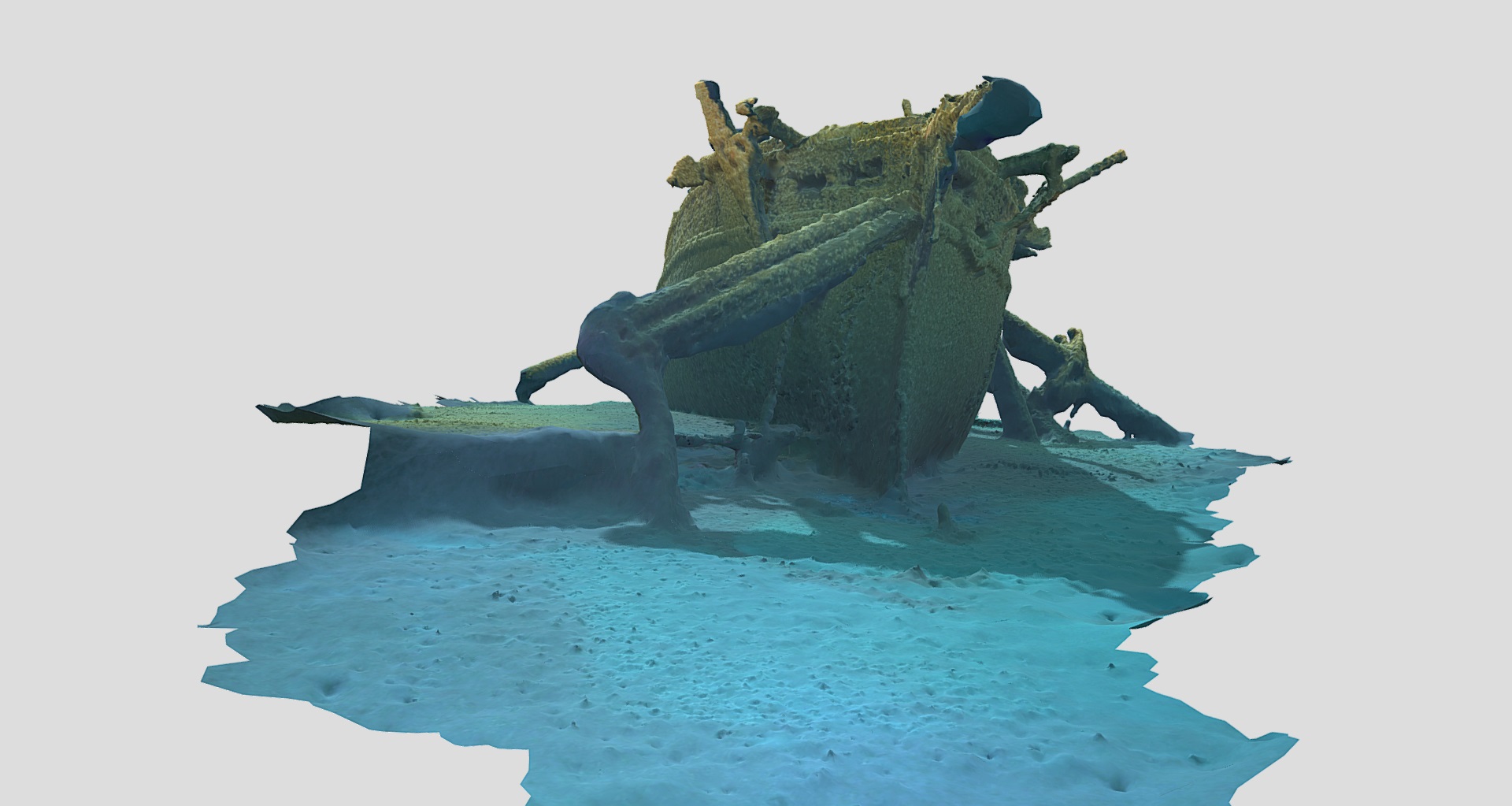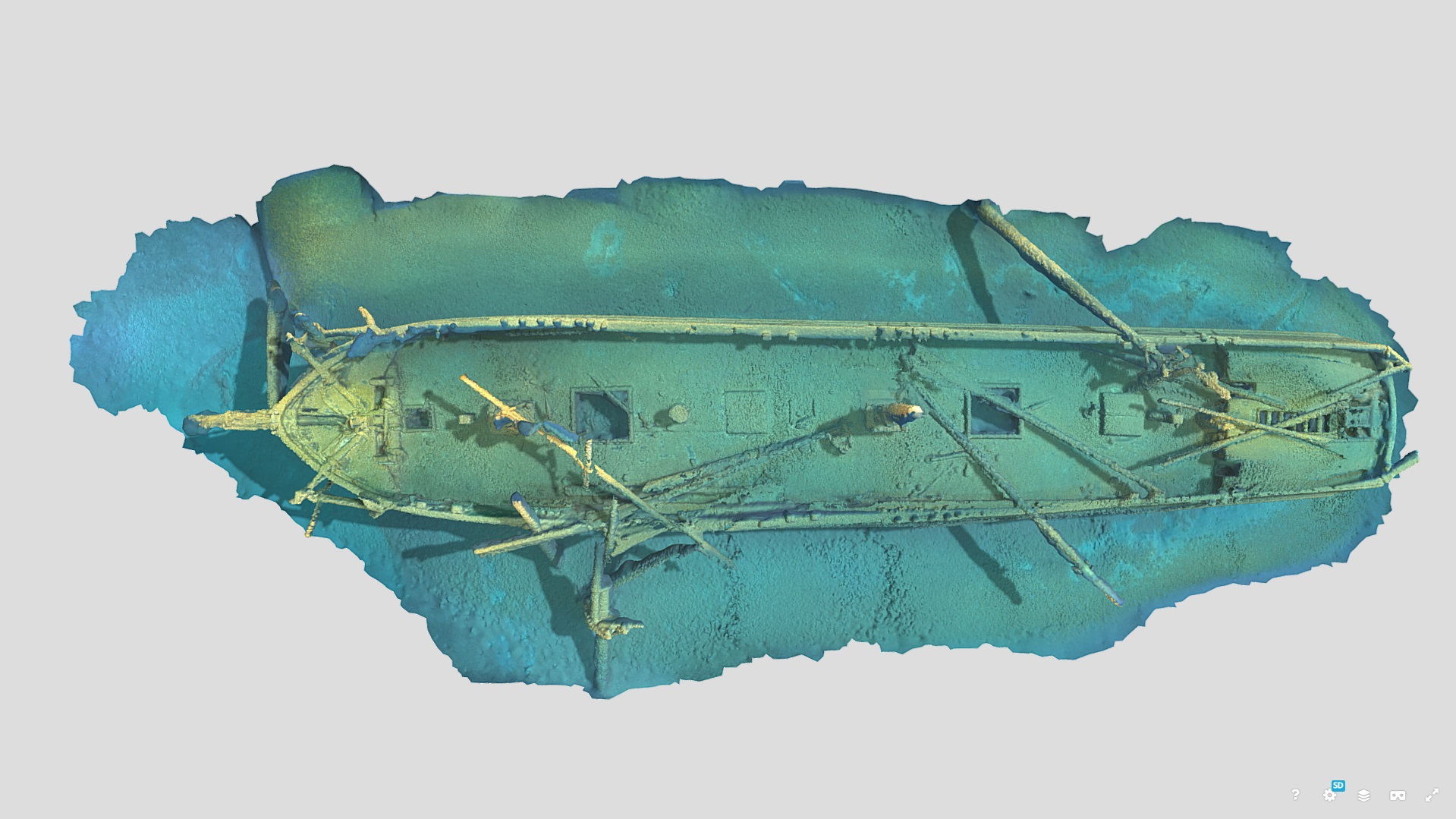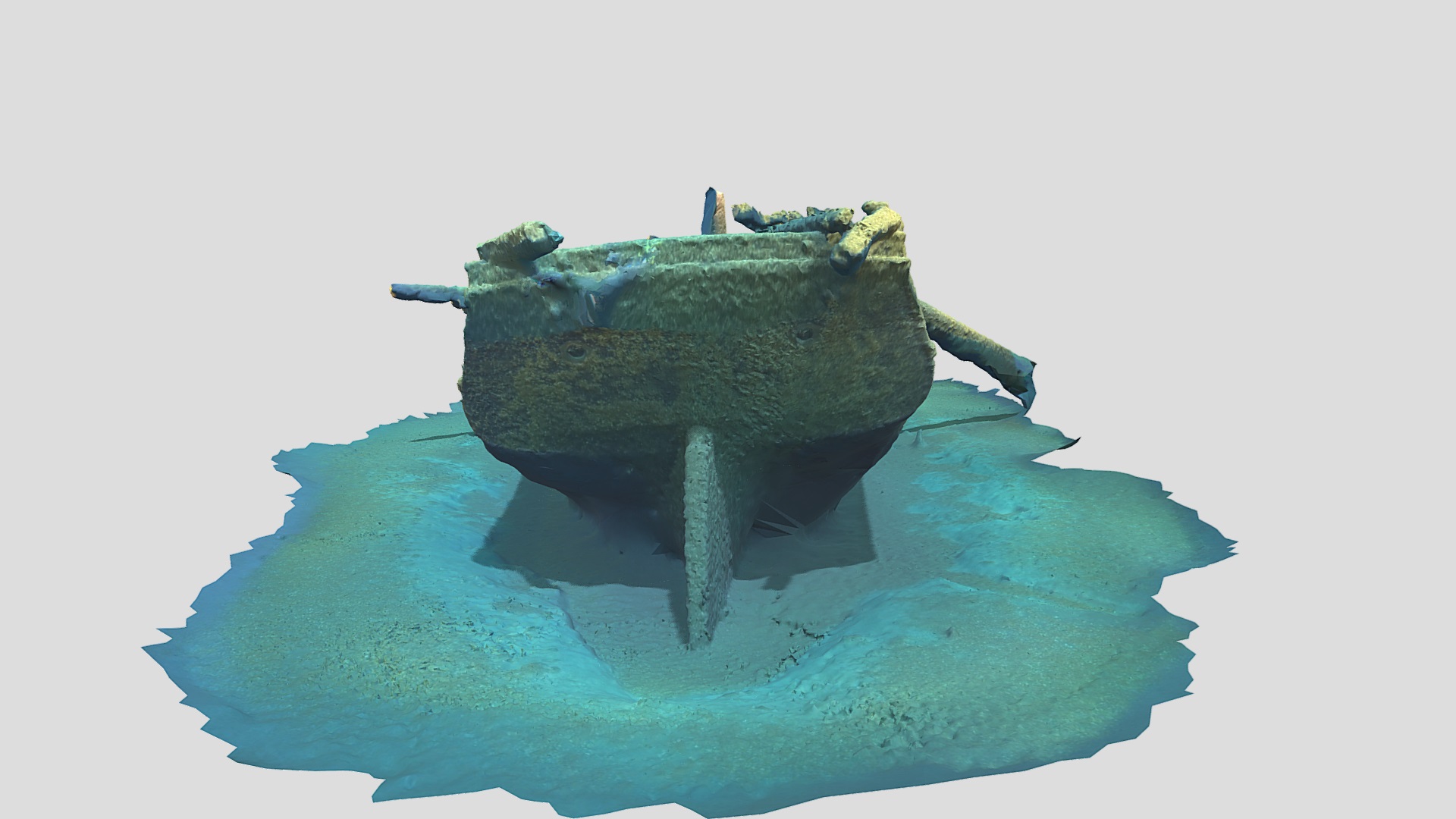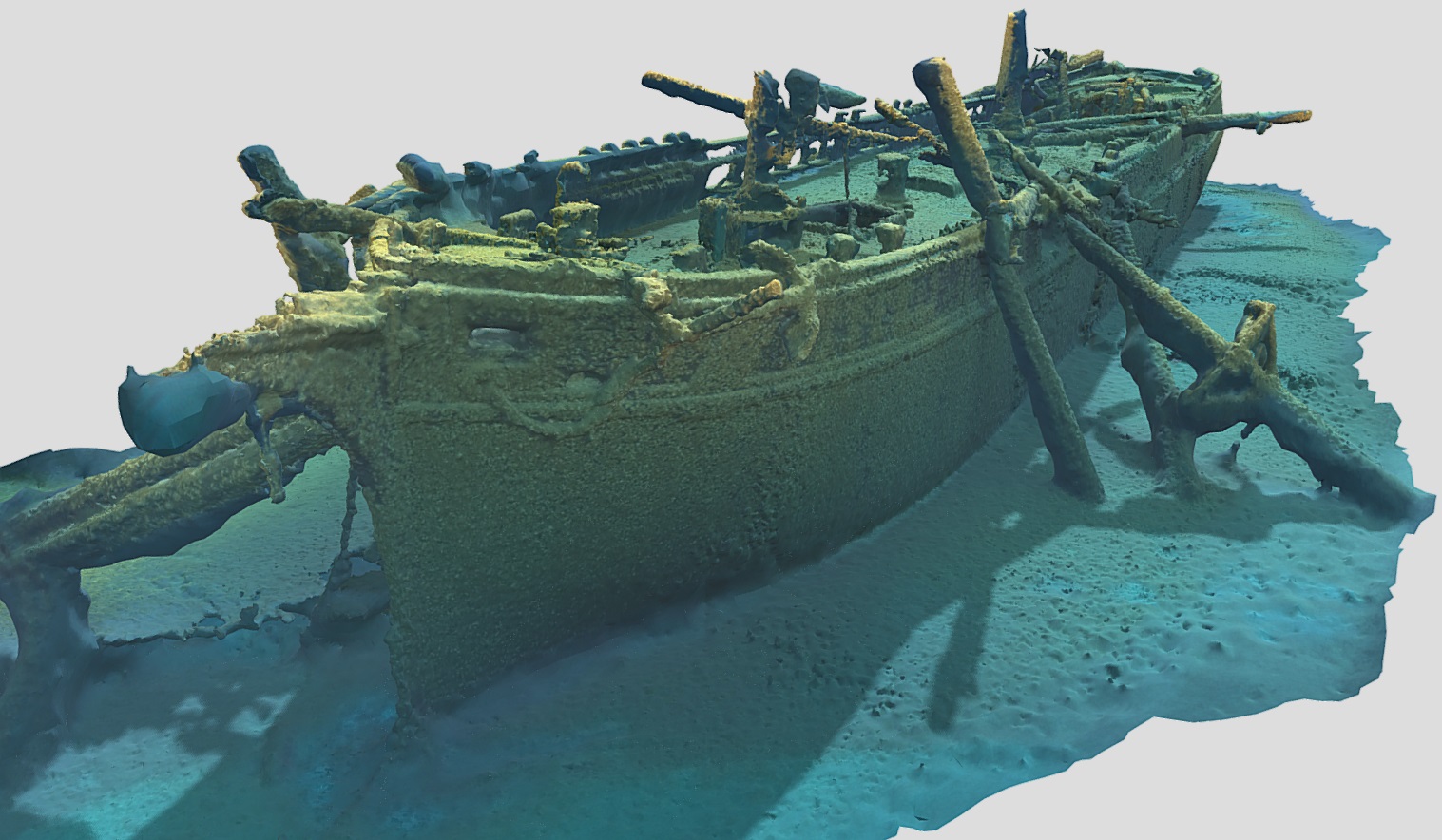Service History
The three masted wooden barkentine
Mojave was laid down in June 1863 at the shipyard of Master Shipbuilder Stewart McDonald in Detroit, Michigan and was launched Wednesday, 18 November 1863. The vessel's launch was initially scheduled for launch on 12 November, but inclement weather pushed the launch ceremony back. The ship was christened on the afternoon of 16 November 1863 by the shipbuilder's niece who named the ship
Mojave after the Native American people she had learned about in school who were indigenous to the Colorado River and the Mojave Desert. The
Mojave was built to the same dimensions as the barkentine
Ravenna launched from the same yard in 1861. Both vessels were constructed for George W. Bissel for use in supporting the produce and commission house Backus & Bissell.
Mojave was a canaller, built to fit through the Welland Canal, the canal that bypasses Niagara Falls and allows ships to trade between the upper lakes and Lake Ontario.
Mojave was also built with uncommon features that would allow it to sail on the open ocean in the Detroit - Liverpool trade. The vessel's bulwarks were taller than typical and a monkey rail was added on top, which heightened them considerably along with other mechanical improvements to make the vessel strong and seaworthy.
Mojave was outfitted with elaborate cabin accommodations making the vessel one of the most elegant ships afloat. The vessel was described as exquisitely beautiful and a fast sailer. Captain Darius Nelson Malott was named Master of the
Mojave, he was the Master of the
Ravenna prior, but prior to that Malott was the Master of the schooner
Augusta. On 8 September 1860, the
Augusta rammed and sank the steamer
Lady Elgin during a gale, which resulted in the deaths of 388 people. Malott was arrested and tried in Chicago and was found not guilty of navigational negligence for the incident. Although cleared of charges in the deaths of 388 passengers aboard the
Lady Elgin, he was not accepted by the public in either Milwaukee or Chicago. George Bissell who also owned the
Augusta, renamed the ship the
Colonel Cook and moved it to the Detroit - Liverpool trade carrying barrel staves. After Malott was cleared of all charges, he was given command of the
Ravenna. Wishing to avoid conflict, Malott stuck to sailing the eastern Great Lakes.
Being launched so late in the season, it is unknown if the
Mojave sailed during the 1863 season. The first voyage of the
Mojave was carrying a cargo of Hay from Detroit to Toledo. After the Hay was unloaded,
Mojave sailed for Pigeon Bay to collect a cargo of wood for Chicago. During the return trip on 7 April 1864, while sailing through a thick fog, the ship grounded on the southwest side of Middle Island in Lake Erie. The tug
Bob Anderson was sent from Detroit on 10 April to pull
Mojave free after it was towed to Detroit for repairs.
Mojave would depart Detroit with 186 cords of wood for Milwaukee. On 6 May 1864
Mojave departed Milwaukee for Buffalo with 19,500 bushels of wheat.
Mojave arrived in Milwaukee again to carry another cargo of 19,000 bushels of wheat for Buffalo. On 23 June 1864
Mojave departed Milwaukee again with a cargo of 19,500 bushels of wheat for Buffalo.
During the night of 24 June
Mojave while sailing through thick fog grounded on Skillagalee Reef (Ile Aux Galets) in northern Lake Michigan. The next morning, wind and heavy seas from the southwest blew the ship further up onto the reef. The crew threw a quantity of the cargo overboard in order to lighten the ship to get it off the reef. Word of the
Mojave's struggles were passed by a passing vessel to the tug
Leviathan in Mackinaw City, Michigan. The tug went to relieve the schooner off the reef, but was unable to assist due to the weather. The tug returned to Mackinaw City to pick up a lighter and returned to the grounded schooner. On 1 July the steam wrecker
Michigan left Milwaukee with two steam pumps aboard to assist in the relief effort.
Mojave was taken off the reef and towed to Duncan Harbor where it was allowed to sink in shallow water. With the arrival of the
Michigan, the two steam pumps were placed aboard to pump out the
Mojave before it could be towed to Detroit. The pumps had to run continuously during the tribe and arrived on 7 July to the Clark Dry Dock for repairs.
After repairs the
Mojave was back in service by mid-September. It was reported that Captain John Mckenzie was the new master at the helm. According to information provided by the descendants of Captain McKinzie, after completing service in the Union army during the Civil War in 1863, he took a job on the lakes and
Mojave may have been his first command. On 20 September
Mojave would depart Buffalo with 250 tons of coal bound for Milwaukee arriving on 29 September.
Mojave was quickly departed again for Buffalo with a cargo of 20,000 bushels of wheat. On 13 October
Mojave departed Buffalo for Chicago with 200 tons of coal.
Final Voyage
During the first week of November 1864
Mojave loaded 18,460 bushels of wheat at Chicago for Buffalo. When the vessel departed Chicago, Captain Darius Nelson Malott was in command. On 8 November 1864, while northbound on Lake Michigan, the
Mojave was sailing four miles behind the Canadian barkentine
Monarch when the vessels encountered heavy seas. The last time the crew of the
Monarch saw the
Mojave, the vessel was sitting low in the water and rolling heavily in the seas.
Mojave had went down into the trough of the waves, became swamped and sank quickly. A sailor was sent aloft to the masthead of the
Monarch to search for the schooner, but
Mojave was never seen again. On 1 December 1864,
Mojave's small boat and cabin doors were reported found along the eastern shore of Lake Michigan.
Today
The wreck of the
Mojave was located in 300ft of water off Sheboygan, Wisconsin by shipwreck hunter Steve Radovan in 2016.
Mojave was surveyed and made into a photogrammetry model in 2023. Weeks later the wreck was subject to a multibeam sonar and ROV survey by Crossmon Consulting. The wreck is intact and many artifacts are still present aboard.





